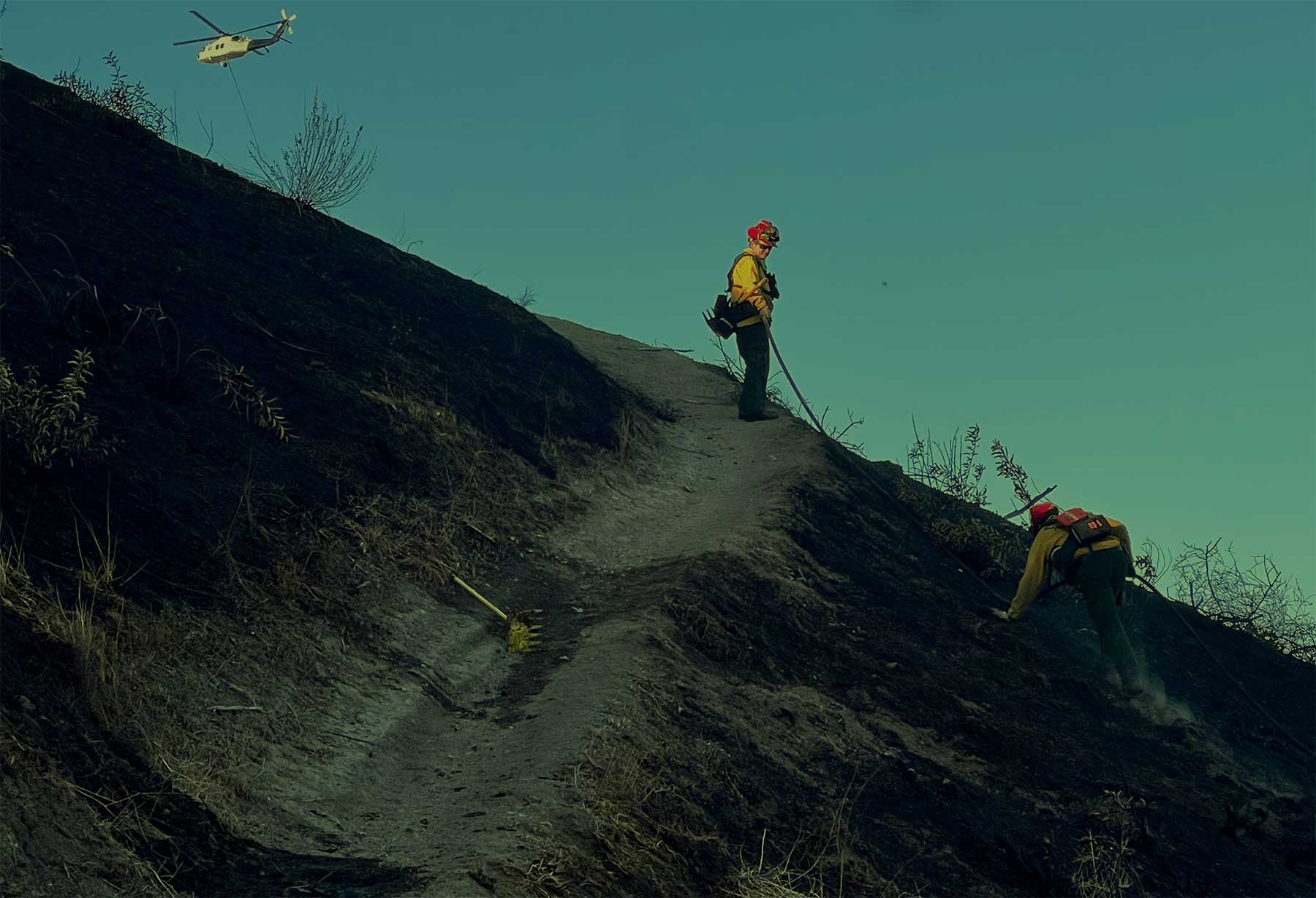California Continues Quick and Effective Action to Assist Los Angeles Fires Recovery
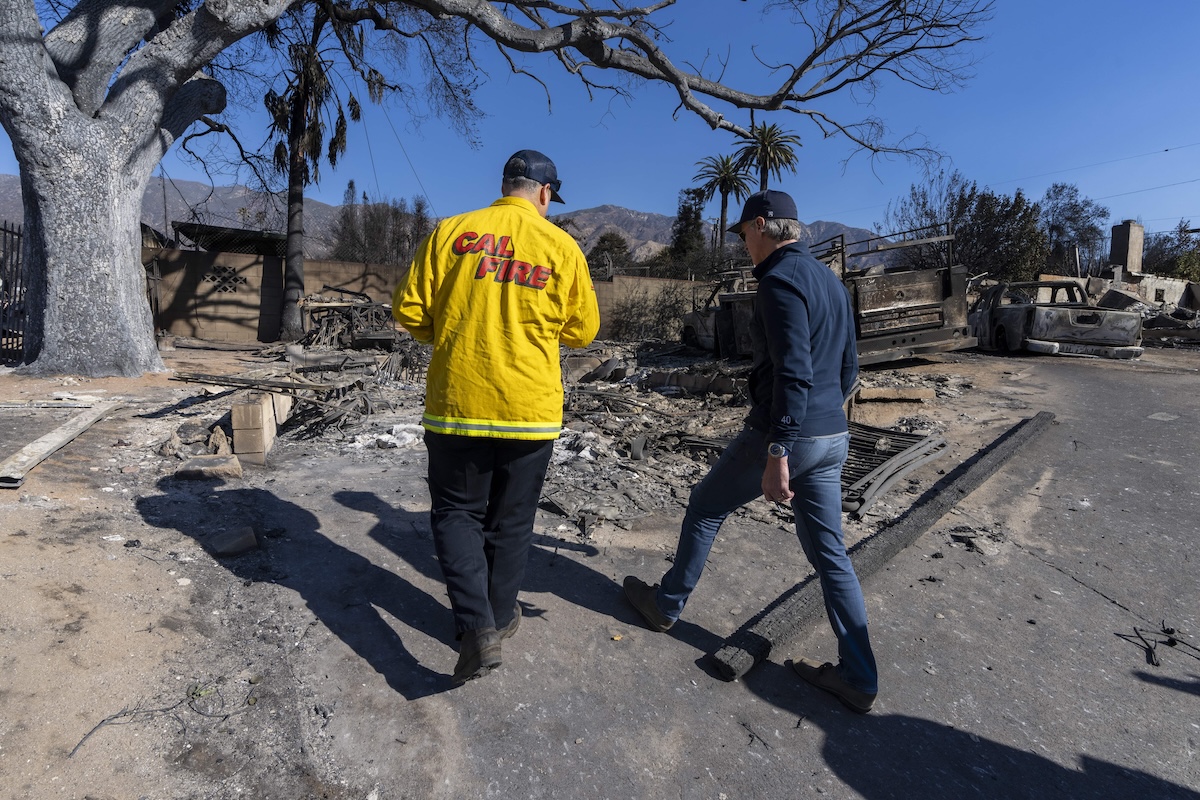
California Continues Quick and Effective Action to Assist Los Angeles Fires Recovery
February 7, 2025 – Governor Newsom has launched historic recovery and rebuilding efforts to accelerate recovery and signed legislation providing over $2.5 billion to support ongoing response and jumpstart recovery efforts for Los Angeles. The Governor has signed 15 executive orders that together are:
- streamlining rebuilding of homes and businesses;
- cutting red tape and suspending permitting requirements under the California Coastal Act;
- removing bureaucratic barriers to provide critical regulatory relief to help fire survivors rebuild, and access essential services;
- providing tax and mortgage relief to impacted communities and businesses, as well as extending tax deadlines;
- fast-tracking temporary housing and protecting tenants; and
- mobilizing debris removal and cleanup and protecting communities from flooding and landslides.
Additionally, State and federal resources have come together to accelerate a safe recovery for Los Angeles:
- The California Conservation Corps (CCC) responded quickly in recovery efforts by installing silt socks and straw wattles around storm drains in the burn zones to keep contaminants found in the ash from washing into the Los Angeles watershed. This was the largest deployment of Corpsmembers in CCC history targeting erosion and contaminant control.
- The California Department of Water Resources deployed over 30 watershed experts and engineers to Los Angeles to support fire mitigation work in burn scar areas and protect downstream communities by keeping toxic runoff out of local watersheds.
- The California Department of Conservation deployed its Watershed Emergency Response Teams to the front lines to quickly assess post fire hazards such as debris flows, flash floods, and falling rocks.
- The California Department of Fish and Wildlife (CDFW) is supporting intake of burned and impacted wildlife to rehabilitation centers, as well as relocating wildlife to help expedite recovery for both people and animals. CDFW also mobilized staff and volunteers to rescue a population of endangered Steelhead trout in Topanga Creek.
- California State Parks is working with US EPA, Cal OES, and CalEPA to help the recovery effort by hosting two temporary sites to safely process hazardous household materials removed from properties destroyed by the Palisades Fire.
- The U.S. Forest Service continues ongoing assessment of damage from the Eaton and Hughes fires through the deployment of Burned Area Emergency Response (BAER) Teams. These teams include scientists, historians and other subject matter experts that identify potential emergency threats on federal lands, such as human life and safety, national forest property, critical natural resources, and critical pre-historic and historic properties, and more. In addition, BAER Teams coordinate with other agencies, who assist businesses, homes and landowners preparing for rain events and potential flooding and debris flow in fire affected areas.
- The Bureau of Land Management (BLM) is currently engaging in emergency stabilization and rehabilitation (ESR) planning following the Border 2 Fire to mitigate the potential impacts of the burned area, such as mud and debris flows, erosion, and other damages. Additionally, BLM assessed impacts of the Hughes Fire and no emergency stabilization or rehabilitation needs were identified.
WHAT ARE THE EXPERTS SAYING ABOUT WILDFIRES IN CALIFORNIA
What are the experts saying
about wildfires in California?
Myth: California isn’t doing enough to manage its forests and landscapes for wildfire risk.
“The State of California is a leader, there is no doubt about it, when you look at what has been applied here in terms of grant funding, also political leadership in the wildfire space, it's really unparalleled anywhere in the western US.”
Scott Stephens, UC Berkeley
“California contains not only the most firefighters in the country but also the most highly trained”
Hugh Safford, a research fire ecologist at the University of California, Davis
“Thousands of wildfire resilience projects have been completed across California to protect our communities and landscapes from catastrophic wildfire in recent years, and more are underway,”
Wade Crowfoot
“No other state in the country is tackling wildfire resilience at this scale or with this level of innovation. From groundbreaking prescribed fire projects to comprehensive data tracking systems, we’re setting the standard for what it means to protect our landscapes and communities.”
Kara Chadwick – U.S. Forest Service Deputy Regional Forester
Myth: Prior treatments would have prevented the damage from LA fires/ Overregulation prevented LA communities from taking action before the fire.
“All of the brush clearance, fuel breaks — they’re very effective on what we would consider a normal day, but what you’re talking about here is probably less than 1% of all the fires that we respond to in Southern California. You could have put a 10-lane freeway in front of that fire and it would not have slowed it one bit.”
Chief Brian Fennessy – Orange County Fire Authority
“The bottom line is the winds far outweigh the fuel in terms of fire spread in a situation like this”
Jon Keeley, fire ecologist with the U.S. Geological Survey
“I do not believe there is anything that wildland management could have done to qualitatively or substantially alter the outcome of these fires.”
Alexandra Syphard, senior research ecologist at the nonprofit Conservation Biology Institute and adjunct professor at San Diego State University
“Clearing brush — and thus eliminating fuel — can reduce the intensity of wildfires in the Los Angeles Basin even during extreme weather, although it’s not likely to have prevented the kind of destruction of Pacific Palisades. At the same time, unlike in forested areas, fuel reduction in the region’s chaparral shrublands risks harming the ecosystem rather than making it healthier.”
Patrick T. Brown – co-director of the climate and energy team at the Breakthrough Institute
Managing Wildfire Risk in Southern California’s Chaparral Landscapes
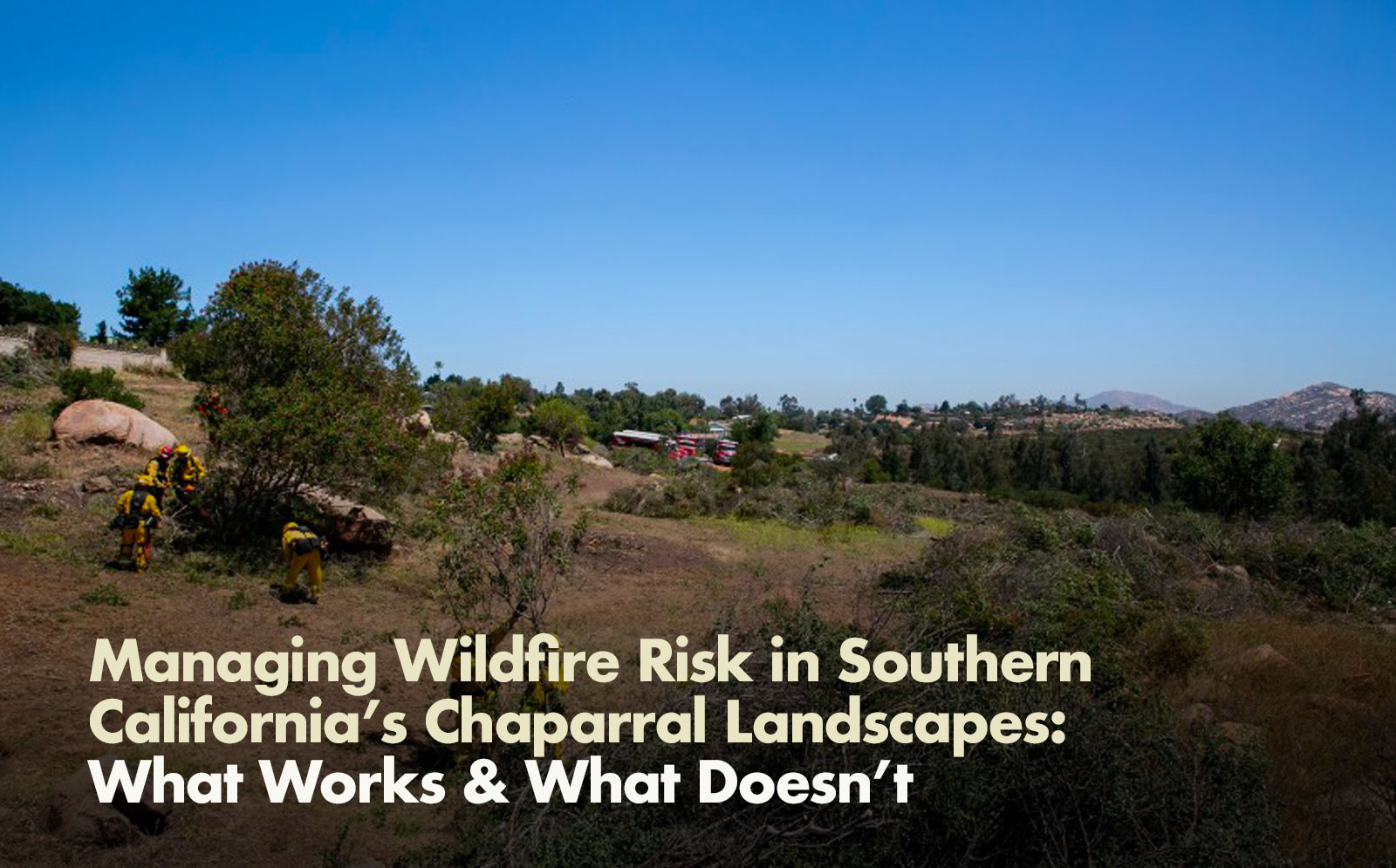
THE PROBLEM: The largest and most catastrophic wildfires in Southern California strike during Santa Ana winds, when extremely dry conditions combine with high winds and ignitions along roadways and powerlines. Climate change has made these conditions more extreme and more likely, and the recent Los Angeles fires are among the most damaging natural disasters in the state’s history.
SOUTHERN CALIFORNIA IS UNIQUE: Southern California’s chaparral landscapes require carefully tailored management approaches for wildfire resilience. Unlike much of California’s forests (including Southern California’s higher elevation forests), Southern California’s chaparral-dominated ecosystems suffer from too much fire. Therefore, fuel treatments such as prescribed fire are generally not appropriate as a landscape-level tool to reduce wildfire risks as more frequent fires lead to the conversion of chaparral into more flammable non-native grasses, which creates even greater fire risk. Accordingly, primary wildfire resilience tools in Southern California communities near chaparral are preventing ignitions; hardening structures and communities; and strategic fuel breaks.
PROGRESS MADE: The State and its partners have completed more than 500 targeted wildfire resilience projects between 2021 and 2023, including 129 in Los Angeles County. These include fuel breaks, roadway ignition reduction projects, and a broad range of community wildfire resilience programs and projects.
Irvine Ranch Conservancy President & CEO, Michael O’Connell, shares the unique obstacles and solutions to wildfire risk in Southern California during a panel on the Los Angeles fires featured through the California Natural Resources Agency’s Secretary Speaker Series.
What Works
1.
IGNITION REDUCTION:
Ignition reduction work focuses on reducing the potential sources of ignition and removing fuels in areas where ignitions are more common. Undergrounding of utility lines and restricting access to unauthorized trails are examples of reducing potential ignition sources. Where ignitions are more common, such as along roadsides, removing easily ignitable fuels, such as non-native grasses, can reduce the likelihood of an ignition becoming a wildfire. Individuals can take steps to prevent human ignitions through actions such as mowing dry grass before 10 a.m., ensuring debris burns and campfires are completely extinguished, and ensuring vehicles are properly maintained.
WHAT WE'RE DOING:
The U.S. Forest Service (USFS) - along with Caltrans, CAL FIRE, DOC, and non-profit partners – created the Southern California Ignition Reduction Program to coordinate and ramp up regionally-tailored ignition reduction efforts. CAL FIRE and its contract counties completed over 29,800 acres of fuels reduction work across 391 projects in the 2023/24 fiscal year. Caltrans treated over 134,000 acres along roadsides between 2021 and 2023 in Southern California. The California Office of Energy Infrastructure Safety ensures electrical corporations are constructing, maintaining, and operating electrical lines and equipment to minimize wildfire risk through review of Wildfire Mitigation Plans.

2.
STRUCTURE HARDENING:
Once a fire starts, pre-fire work to create defensible space and harden structures, especially removing flammable materials from Zone Zero (within 5 feet of structures) and installing low-cost protections like ember-resistant vents, offers the best chance to reduce risk to homes near the flame front.
WHAT WE'RE DOING:
Governor Newsom signed Executive Order N-18-25 which directs the State Board of Forestry to accelerate its work to adopt Zone Zero regulations. CAL FIRE inspected over 216,000 homes in Southern California in the 2023/24 fiscal year. CAL FIRE and Cal OES partnered through the California Wildfire Mitigation Program to develop a home hardening initiative to retrofit, harden, and create defensible space for homes at high risk to wildfires, focusing on high socially-vulnerable communities.
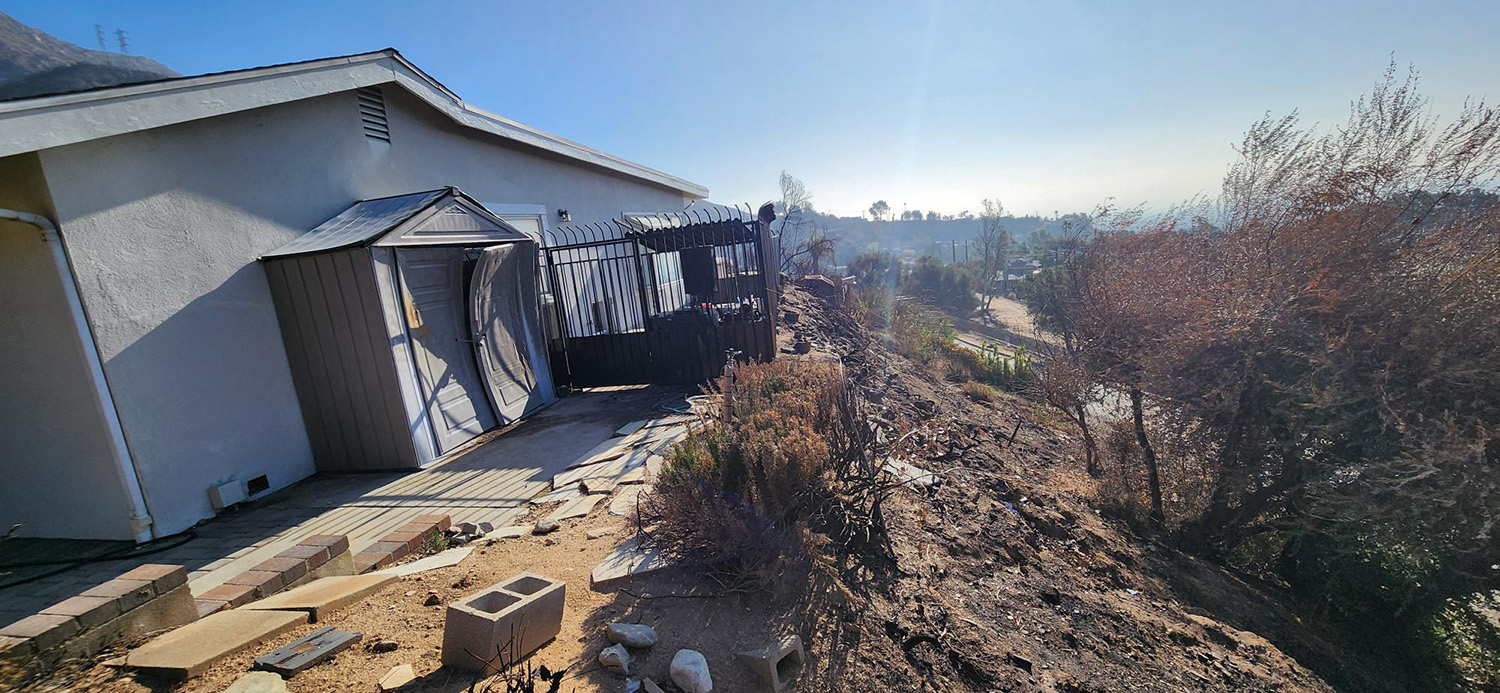
– Steve Hawks, Senior Director for Wildfire at the Insurance Institute for Business & Home Safety
3.
STRATEGIC FUEL BREAKS:
When placed strategically and properly maintained, fuel breaks can reduce fire risk and enable firefighters to protect communities safely and effectively. Three key factors – fire weather, strategic placement, and continued maintenance – determine fuel break effectiveness.
WHAT WE'RE DOING:
CAL FIRE Provides funding through competitive grants to communities across the state to create and maintain fuel breaks and conduct other mitigation and efforts. CAL FIRE continues to evaluate the effectiveness of fuel treatments (viewable in an interactive dashboard) that have been impacted by wildfire to ensure projects are achieving intended objectives and to inform management decisions. A selection of Fuels Treatment Effectiveness Reports from 2024 are viewable here. USFS has treated more than 50,000 acres for hazardous fuels in Southern California since 2023. This includes fuel breaks that enabled firefighters to protect the communities of Lake Elsinore from the 2024 Airport Fire and Angelus Oaks from the 2024 Line Fire. The Bureau of Land Management is utilizing cross-boundary strategic fuel breaks to protect vulnerable communities from wildfire. This includes fuel breaks that helped firefighters contain the 2024 Grove 2 Fire in San Diego County.
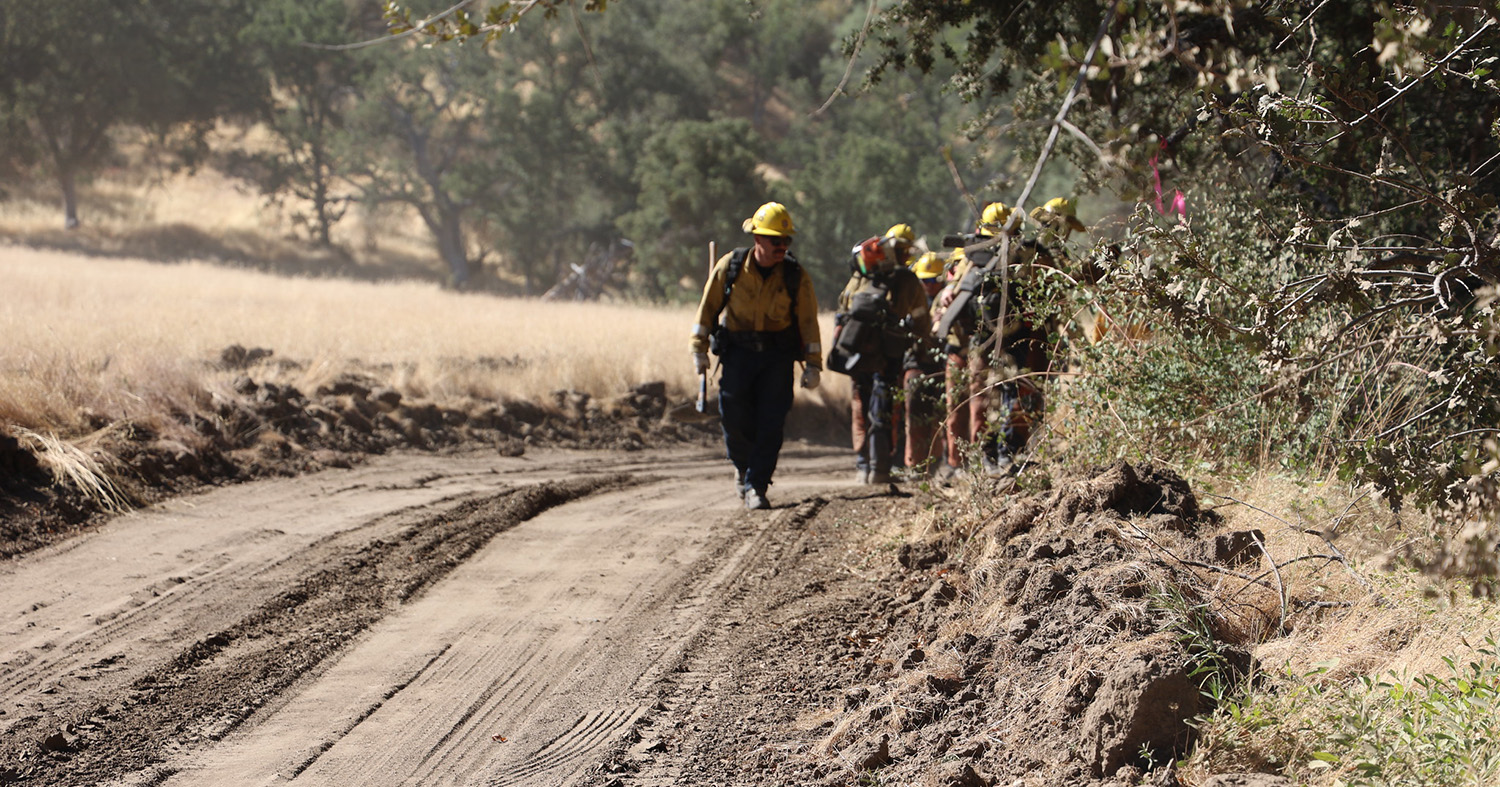
“Fuel breaks are somewhat controversial, because there is a net ecological loss when you create them, but they are beneficial when they are strategically placed. “
– Megan Jennings, Research Ecologist at San Diego State University
What Doesn't Work
1.
WIDESPREAD BRUSH CLEARING:
In the absence of extreme wind, strategically-based fuel breaks can be highly effective at reducing fire risk, but more widespread chaparral clearing can also cause damage by completely removing native vegetation, impacting habitat and increasing the risk of spreading more flammable non-native species, which can also indirectly increase fire risk.
– Max Moritz, Wildfire Specialist at UC Santa Barbara
– Patrick T. Brown, The Breakthrough Institute
2.
FUEL BREAKS UNDER EXTREME WEATHER CONDITIONS:
Under extreme fire weather conditions, such as the recent Santa Ana winds during the Los Angeles fires, fuel breaks, and other fuel reduction projects, play a smaller role in reducing fire spread as wind carries embers well in front of the active flame front.
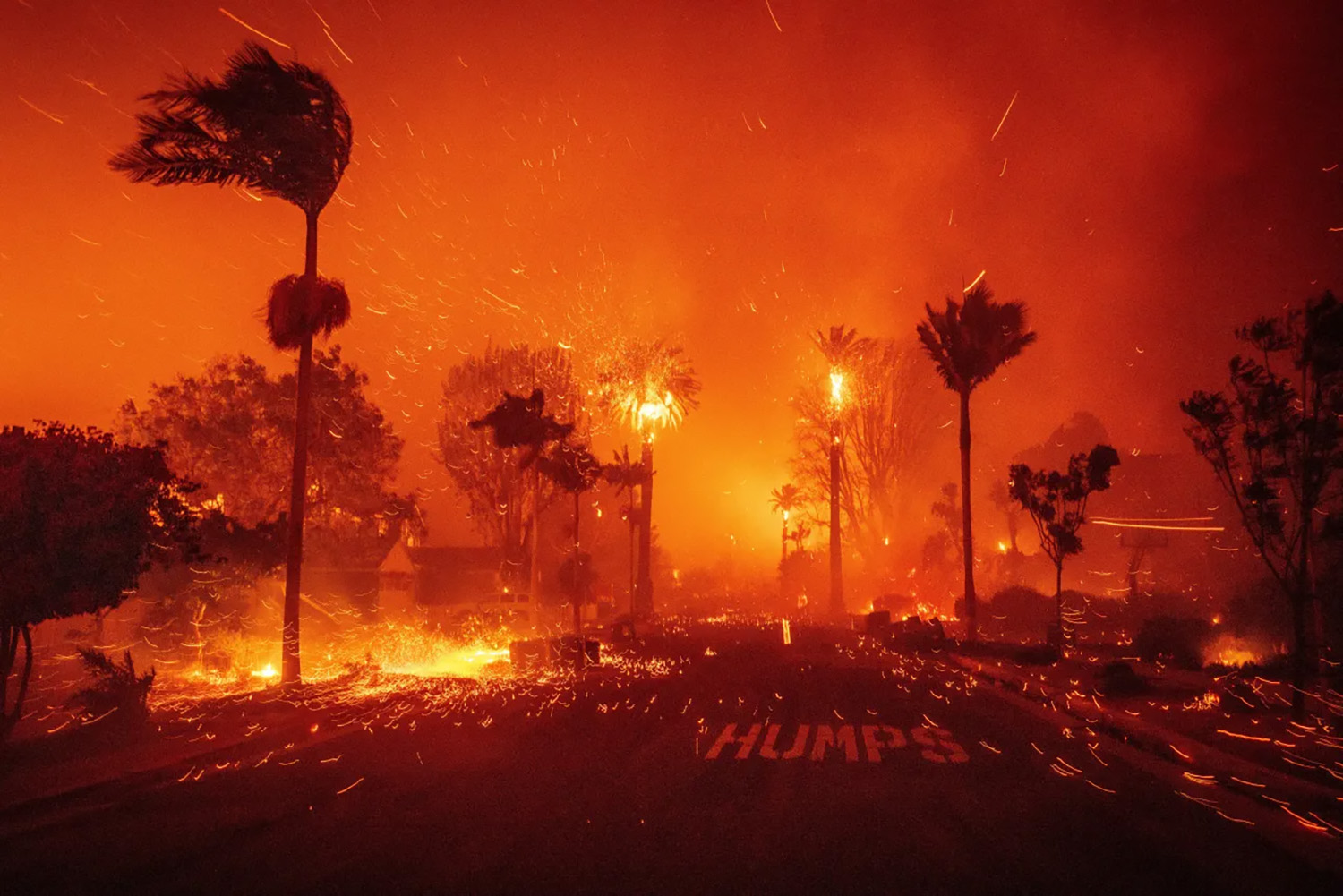
– Chief Brian Fennessy, Orange County Fire Authority
– Alexandra Syphard, Senior Research Ecologist with The Conservation Biology Institute
3.
UNMAINTAINED FUEL BREAKS:
Unmaintained fuel breaks and disused roads create places for flammable non-native grasses to thrive, which increases ignition risks. One-time treatments and unmaintained fuel breaks can have the unintended effect of actually increasing fire risk.
“Unmaintained fuel breaks can slow fire suppression response and put firefighters at risk, therefore there should be a commitment and plan to maintain a strategic fuel break network across Southern California.”
– Nicole Molinari, Southern California Province Ecologist, U.S. Forest Service
4.
PRESCRIBED FIRE IN CHAPARRAL LANDSCAPES:
Unlike many other parts of California, prescribed and managed wildfire in Southern California chaparral is not a widespread solution because fires are occurring MORE frequently than they did historically. Too much fire is leading to conversion of native vegetation to more flammable non-native grasses, resulting in even greater fire risk. However, prescribed fire can be an effective tool in Southern California’s montane forests and in other targeted applications in the region.
“In our shrublands we have too much fire, and we want to have less. Too much fire means shrublands turn to grasslands.”
– Megan Jennings, Research Ecologist at San Diego State University
Resources:
*Information included in this document was sourced from the California Wildfire and Forest Resilience Task Force’s Southern California Regional Profile.
Find practical ways to protect your home from wildfire: Defensible Space | CAL FIRE
Senator Padilla Introduces Three Bipartisan Bills to Bolster Fire Resilience and Proactive Mitigation Efforts
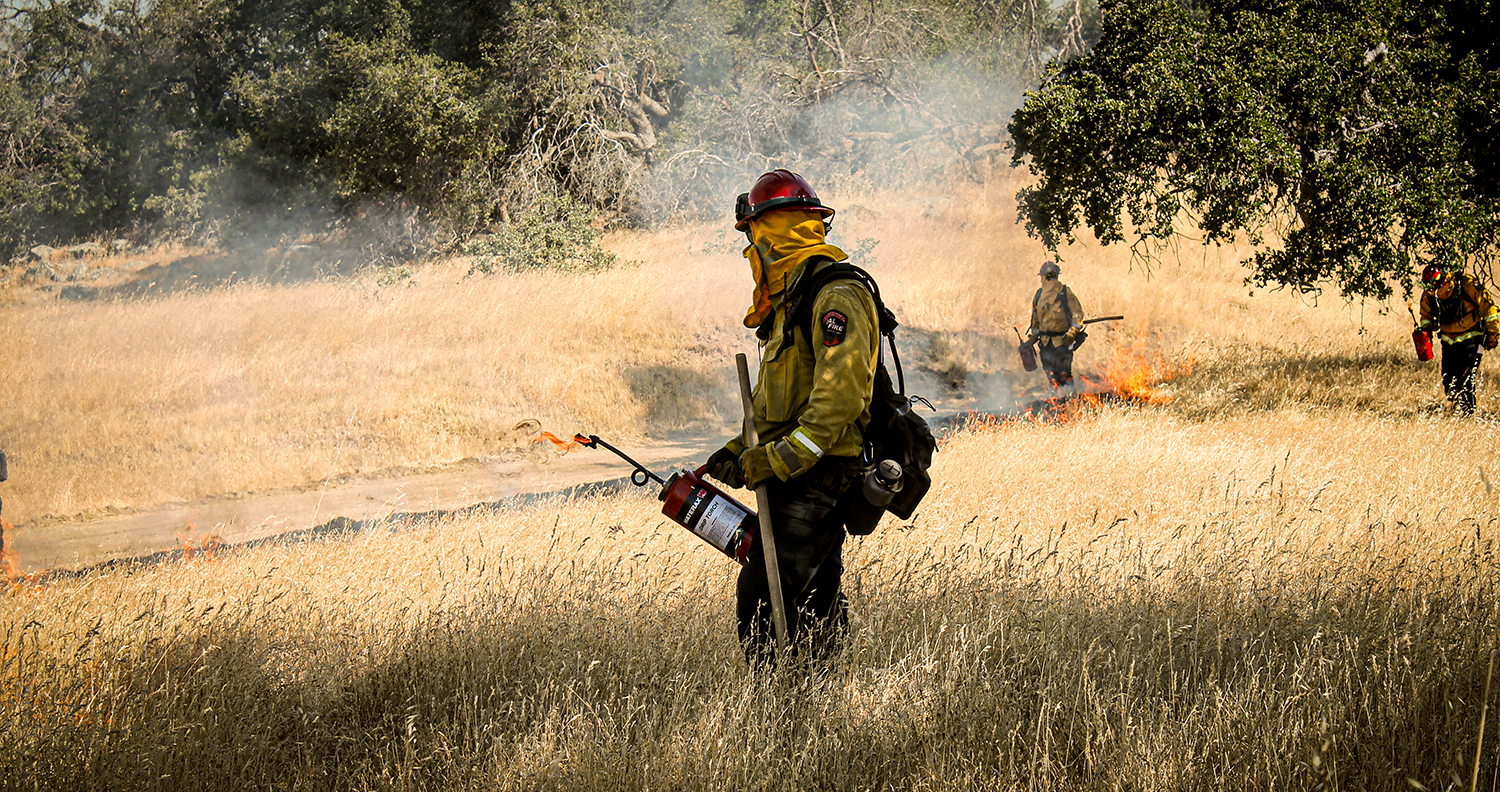
Senator Padilla Introduces Three Bipartisan Bills to Bolster Fire Resilience and Proactive Mitigation Efforts
On February 3, U.S. Senator Alex Padilla (D-Calif.) introduced a package of three bipartisan bills to bolster fire resilience and proactive mitigation efforts. The package includes:
• Wildfire Emergency Act— Would reduce the threat of destructive wildfires through forest restoration, firefighter training, energy resilience retrofits, and wildfire-hardening home modifications in low-income communities. Specifically, the legislation would:
-
-
- provide the U.S. Forest Service (USFS) with a pilot authority to leverage private financing to increase the pace and scale of forest restoration projects;
- authorize funding for programs to expand the forest conservation and wildland firefighting workforce;
- establish an energy resilience program at the U.S. Department of Energy (DOE) to ensure that critical facilities remain active during wildfire disruptions, authorizing up to $100 million for necessary retrofits;
- expand an existing DOE weatherization grant program to provide up to $13,000 to low-income households to make wildfire-hardening retrofits;
- expedite the placement of wildfire detection equipment on the ground, such as sensors or cameras, as well as the use of space-based observation;
- establish a prescribed fire-training center in the West and authorize grants to support training the next generation of foresters and firefighters; and
- authorize up to $50 million to support community grants of up to $50,000 for locally focused land stewardship and conservation.
-
• Fire-Safe Electrical Corridors Act— Would allow the USFS to approve the removal of hazardous trees near power lines on federal lands without requiring a timber sale, thereby easing the removal of hazardous trees, and reducing the risk of catastrophic wildfire. This would allow the USFS to provide standing permission for electrical utilities to cut and remove hazardous trees near power lines within existing rights-of-way without requiring a timber sale. Utilities would be required to return any proceeds to the USFS.
• Disaster Mitigation and Tax Parity Act— Would further incentivize homeowners to proactively protect their homes from disasters by providing a tax exemption on payments from state-based programs. Specifically, the bill excludes qualified catastrophe mitigation payments made under a state-based catastrophe loss mitigation program from gross income calculations.
USDA California Climate Hub Provides Forestry Resource Repository for Land Managers
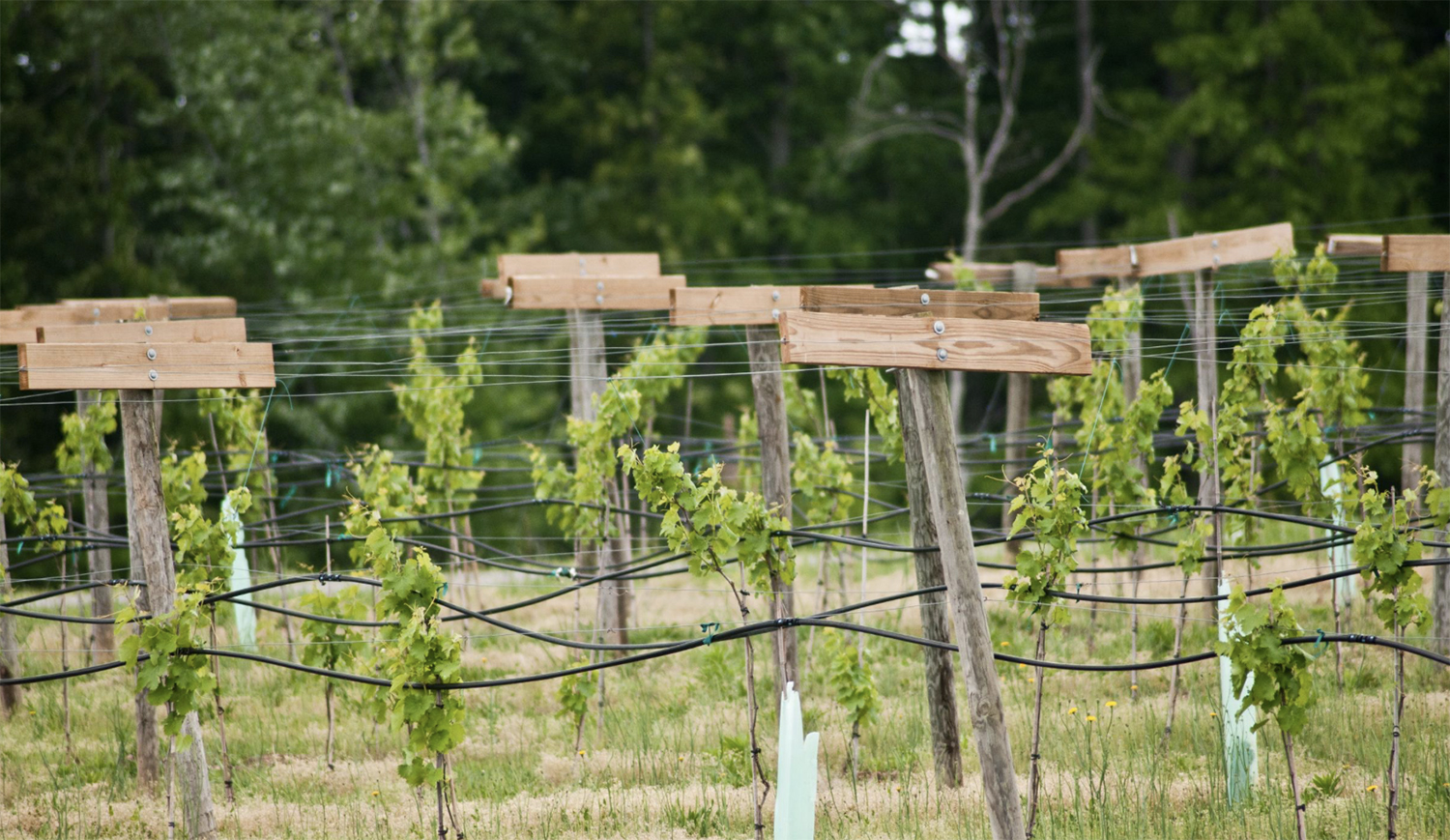
New Website Provides Forestry Resource Repository for Land Managers
January 8, 2025 – The USDA California Climate Hub released a new webpage that compiles datasets and decision-support tools to help land managers and natural resource professionals with assessing the conditions of a landscape for project planning. The list is not exhaustive of all resources but focuses on data and tools available to the public, with an emphasis on resources available within the state of California. The repository also contains a series of factsheets, produced by the USDA California Climate Hub, that offer a succinct overview of the California Wildfire and Forest Resilience Task Force’s Regional Resource Kits and its constituent products.
Survey Open to Collect Input from Landowners on Prescribed Burning
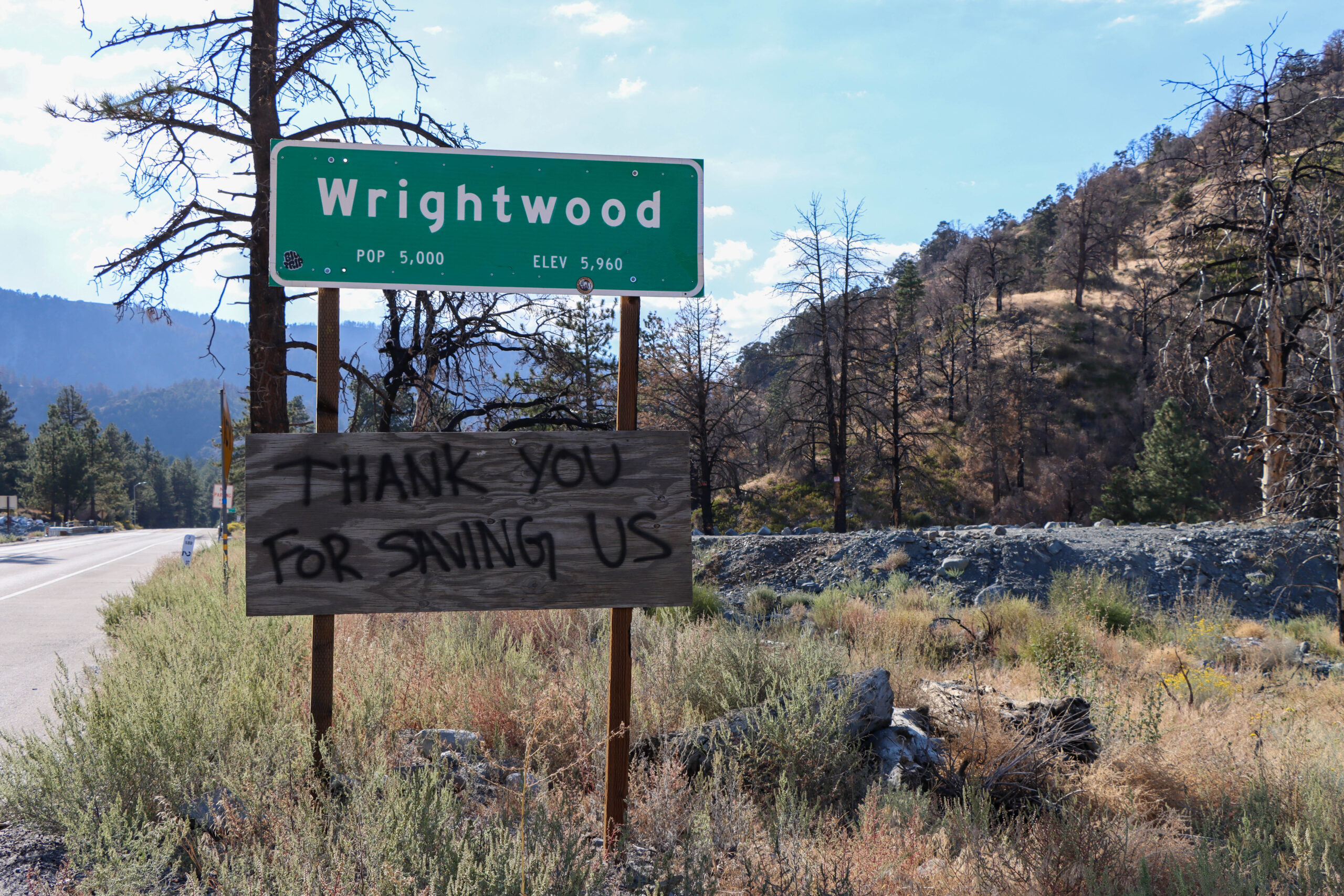
Survey Open to Collect Input from Landowners on Prescribed Burning
In collaboration with the University of California Cooperative Extension, Pennsylvania State University is conducting a survey to better understand private landowner perspectives and potential intentions to use planned burning in California. The objectives of this project are to:
•Evaluate private forest landowners’ attitudes towards prescribed fire in California.
•Identify barriers and opportunities for prescribed fire adoption in the state.
•Develop tailored support strategies for California landowners.
•Assess the influence of policy and environmental factors on prescribed fire use in California.
Recovering Private Lands Through Emergency Forest Restoration Teams
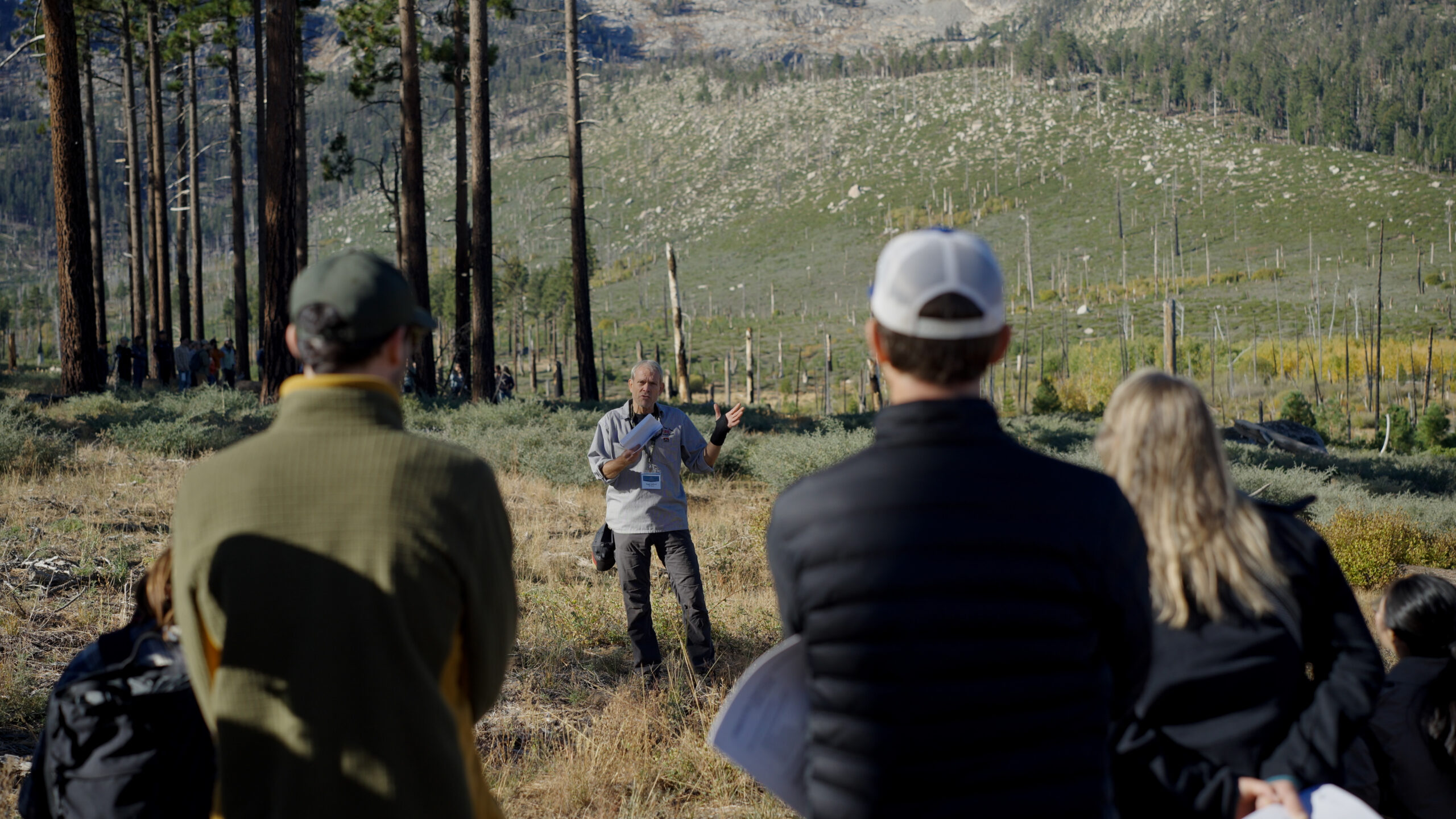
Recovering Private Lands Through Emergency Forest Restoration Teams
December 11, 2024 – While non-industrial private forests make up roughly a quarter of California’s forested land, they often don’t have any pre-established funding or plans for immediate restoration after a wildfire. To address this critical gap, the Task Force Action Plan (Action Item 1.14) calls for the establishment of Emergency Forest Restoration Teams (EFRTs) to help small private forestland owners recover their lands. In 2021, three pilot EFRTs were developed in response to the Dixie, Tamarack and Caldor fires. By the end of 2023, the three programs had removed dead trees from 2,500 acres and planted new trees on 1,400 acres. These pilot EFRTs are proving successful and there are now 15 EFRT programs established across the state.
U.S. Forest Service Thinning Projects Protect Southern California Communities

U.S. Forest Service Thinning Projects Protect Southern California Communities
November 13, 2024 – Two of this year’s larger fires in Southern California, the Line Fire and the Bridge Fire, demonstrated how fuels treatments protect communities and natural landscapes. The Line Fire was fueled by high winds and steep terrain and quickly spread toward the community of Angelus Oaks. Luckily for firefighters defending Angelus Oaks, previous wildfire mitigation work in San Bernardino National Forest, including prescribed fire and mechanical thinning, enabled firefighters to suppress the wildfire before it was able to burn through Angelus Oaks.
A few days later, the Bridge Fire was heading toward the community of Wrightwood but first hit Forest Service fuel breaks, where trees had been thinned out five years prior. When the fire reached the fuel breaks, fire behavior altered, slowed, and allowed firefighters to contain the blazes before the fire could reach the 5,000 residents of Wrightwood. These success stories on the importance of preventive treatments build on effectiveness reporting by CAL FIRE and other Task Force partners that are doing the proactive work to protect landscapes and communities before wildfire strikes.
California Public Seed Banks Complete Historic Cone Collection Year
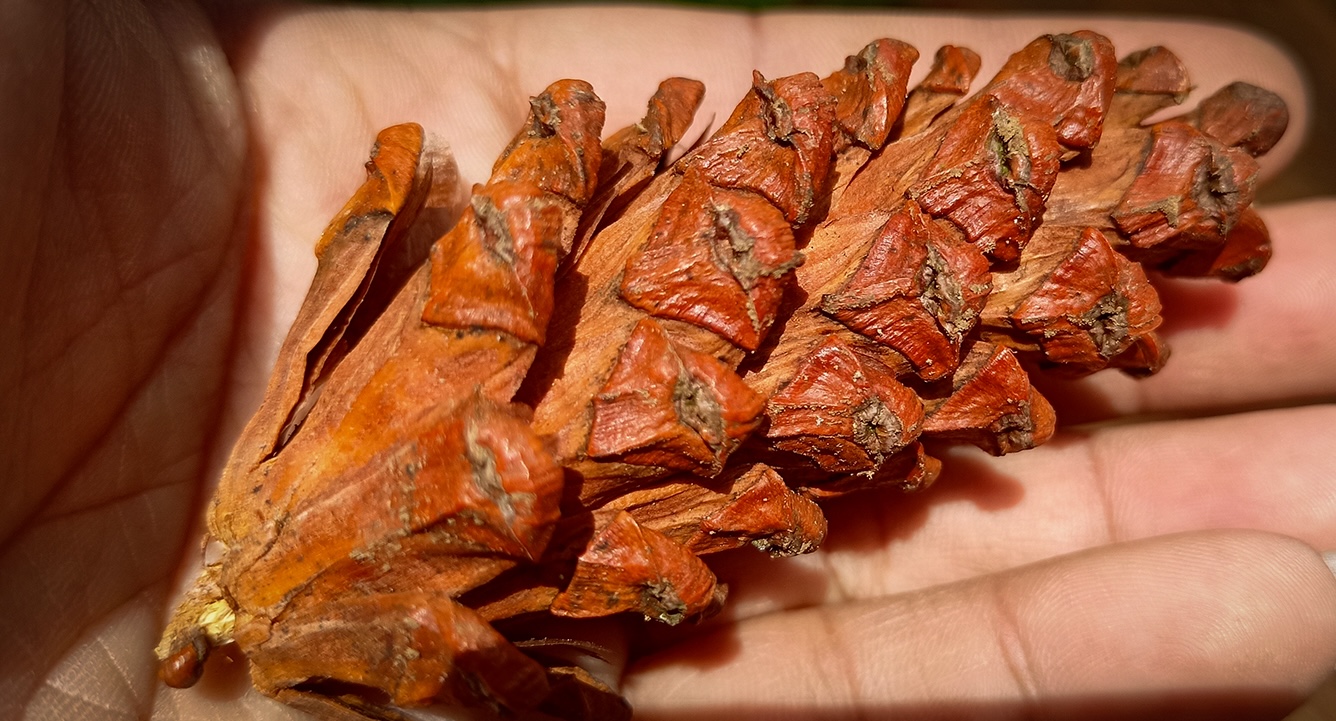
California Public Seed Banks Complete Historic Cone Collection Year
December 5, 2024 – California’s two public seed banks collected a total of 11,330 bushels of conifer seed-bearing cones in 2024. The U.S. Forest Service Placerville Nursery collected 6,700 bushels and CAL FIRE’s L.A. Moran Reforestation Center collected 4,630 bushels. 30% of the bushels collected in 2024 were supported by the California Reforestation Pipeline Partnership which helped increase cone collection in public seed banks in 2024 by 275% from the total collected in 2023. In addition to public seed banks, voluntarily reported private sector seed collection in California totaled 8,670 bushels which brings the statewide total to at least 20,000 bushels which could potentially reforest as much as 681,000 acres.
State Coastal Conservancy Awards Nearly $6 Million For Wildfire Resilience Projects
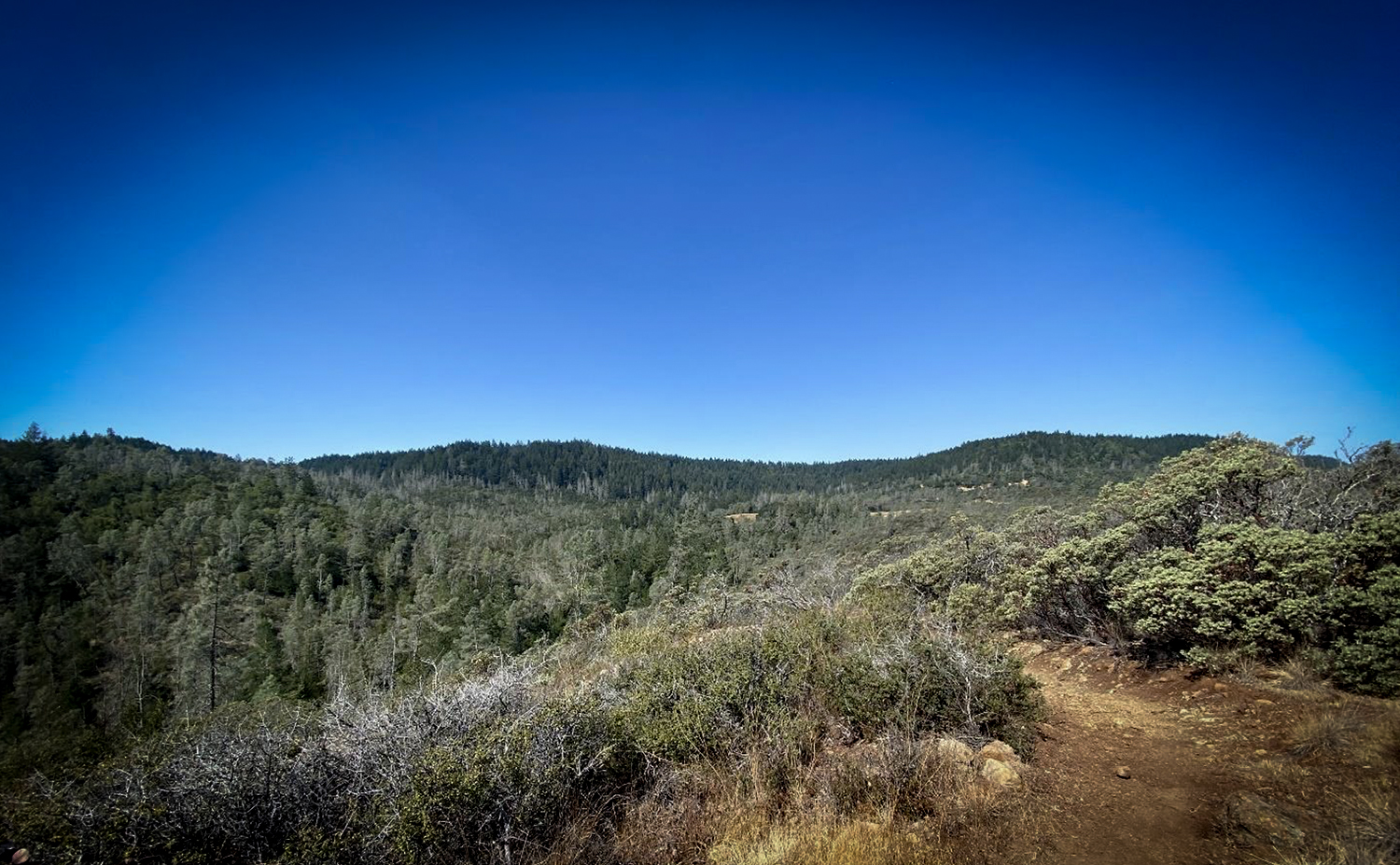
State Coastal Conservancy Awards Nearly $6 Million For Wildfire Resilience Projects
- $250,000 to support Civicorps’ East Bay Wildfire Risk Reduction project for workforce development and vegetation removal in Alameda and Contra Costa Counties.
- $1,542,000 for the San Mateo County Critical Evacuation Corridors Wildfire Resilience Project to remove hazardous vegetation along two critical road evacuation corridors.
- $500,000 to implement the Garland Ranch Wildfire Resilience Project to thin 12 acres of eucalyptus trees and create a 6.2 acre shaded fuel break, maintain previously treated areas, collect data, and conduct community engagement in Monterey County.
- $1,626,000 to the U.S. Forest Service to treat approximately 24 miles of historic fuel breaks by removing vegetation along the Santa Lucia ridge line within the Los Padres National Forest to protect neighboring communities in Monterey County from catastrophic wildfire.
- $947,850 for Santa Barbara’s Wildfire Resilience Project to reduce wildland vegetation fuels acres, restore native species, and conduct community engagement.
- $1,131,700 for the Ascot Hills Resilience Project in Los Angeles to enhance 33 acres of habitat through the removal of invasive plants and planting of native plants to increase wildfire resilience.

